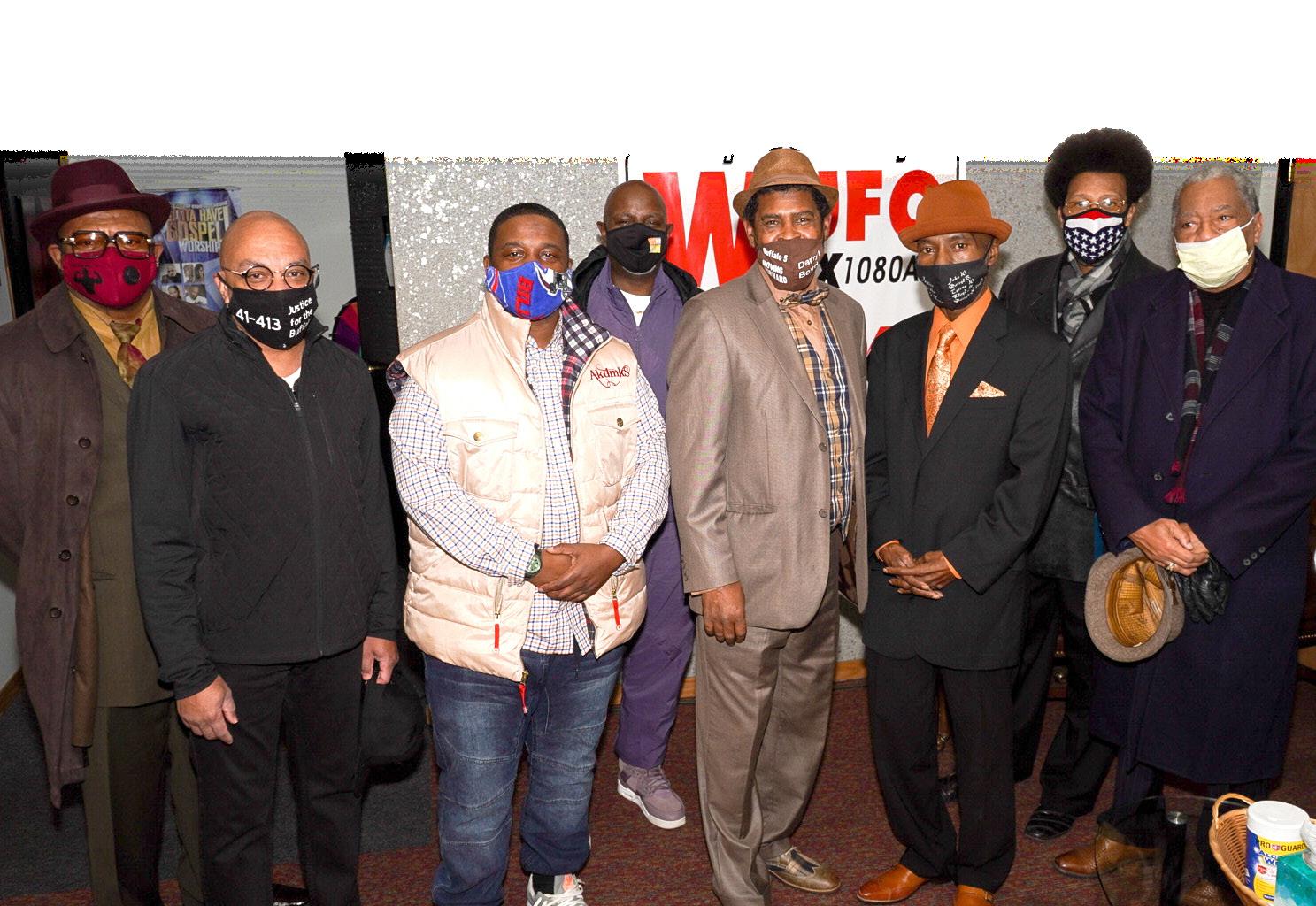5
Challenger Community News • t hec hallengernews.com •Januar y 21, 2021
CAO Appoints Thomas U. Kim New President: Retiring CEO Nate Hare Calls Him “Inspiring Leader”
Living with the “Silent Thief”: Is It Time for a Glaucoma Screening?
By Dr. Deepan Selvadurai anuary is Glaucoma Awareness Month, but what do we really know about glaucoma? It is the second leading cause of blindness in the world in adults over the age of 60, but that doesn’t tell the whole story. In black populations, for instance, glaucoma occurs about ten years earlier on average, more frequently, and with higher rates of blindness. There are a few reasons why glaucoma — “the silent thief of sight” — can be more concerning than other diseases that affect vision. We’ll talk about some here, and why scheduling regular glaucoma screenings can be a step to saving your long-term vision. The first step to understanding glaucoma is to understand a little about the eye’s anatomy. Light enters the eye where it’s focused — or “refracted” — onto the retina, which contains millions of light-sensitive cells. These cells organize the information the eye receives and sends it to the brain. The “cable” that carries these signals is called the optic nerve. Glaucoma is an eye disease that causes the pressure inside of the eye to rise, damaging the optic nerve, resulting in the loss of peripheral (side) vision. It’s a chronic, progressing illness that will continue to worsen over time, and unlike some other eye diseases, the vision loss that occurs is permanent. This makes early detection critical. There are a variety of different ways to stop or slow glaucoma’s progression — but only if it’s caught in time. Why Is Glaucoma So Concerning? There are three main sources of blindness in older Americans: macular degeneration (AMD), cataracts, and glaucoma. There’s a key difference between glaucoma and the other two, however, and it has to do with the way it affects your vision. AMD and cataracts affect the central vision, while glaucoma causes vision loss from the outside in. This is a part of why glaucoma is called the “silent thief of sight”. It slowly steals away your peripheral vision and it does it with very few symptoms. Because this vision is key to mobility and overall function, most people don’t notice the loss of peripheral vision until it starts to have huge impacts on their overall independence — and at that point, vision loss may be too severe to overcome. Early Detection is Key A number of risk factors contribute to glaucoma, including age, ethnicity, and genetics, and lifestyle habits. While we’re not sure why exactly black Americans are affected much more heavily than other ethnic groups, glaucoma is also hereditary. If glaucoma runs in your family, you’re significantly more at risk for it. Other conditions that can put you at a greater risk for developing glaucoma include diabetes, hypertension, and even extreme nearsightedness. All this is to say that having regular glaucoma screenings is so important to the long-term preservation of your vision. You may not notice your peripheral vision as much as your central vision, but there’s a reason why it’s said that glaucoma is “the worst way to go blind” — your side vision is critical to mobility, driving, and staying independent later in life. Vision loss from glaucoma is permanent, but preventable. It’s never too early to be screened for eye diseases, especially if you have a family member with the disease or are in a high risk group, as African Americans tend to be. Dr. Selvadurai ,one of Buffalo’s premiere glaucoma specialists, is a fellowship trained and board certified cataract and glaucoma specialist, completing training at Northwestern University, The Mayo Clinic, and the University of Toronto on advanced methods for treating and managing complex cases of glaucoma.
J
The Community Action Organization of WNY’s (CAO) Board of Directors has selected Thomas U. Kim as its new President and CEO. Kim has a 30+ year career of extensive organizational, management, and fiscal leadership experience across non-profit, government, military, and for-profit sectors. He currently serves on the Board of Directors for the Primo Center in Chicago, an organization that serves the city’s homeless population Kim’s life experience also stood out to CAO’s Board. He grew up in extreme poverty while being raised by a single immigrant mother. His family experienced racial injustice first-hand. The Honorable Craig D. Hannah, CAO’s Board President, said he looks forward to working with Kim. “The Board, with the help of an extensive search process conducted by the executive search firm Catapult Executive Consulting, selected Kim because of his high-level leadership and management experience with many non-profit organizations across the nation.” Hannah added: “His passion for driving change in low-income communities stems from a first-hand understanding of the issues they face.” Retiring President and CEO of CAO, L. Nathan Hare, said he is impressed by Kim’s record of leadership. “Mr. Kim is an inspiring leader who can carry our mission forward with a new vision, ideas, and enthusiasm,” Hare said. In September of last year Mr. Hare announced plans to retire after serving the antipoverty agency for 18 years. Hare, a lifelong resident of the City of Buffalo , has worked in youth employment, youth training and education, foster care, social
services, and juvenile justice for more than 40 years. He served as leader of the CAO since 2002. Between 2002 and the present, he increased the agency’s operating revenue from under $20,000,000 to well over $40,000,000 and brought the agency’s employee headcount from just over 300 to well over 800. He also dramatically expanded the number and quality of program offerings that were aimed more broadly at eliminating the root causes of poverty and the lack of opportunity. The Community Action Organization of WNY was incorporated in 1965 and operates anti-poverty programs
in Erie and Niagara counties. Annually, CAO serves more than 50,000 families and individuals . Hare will continue his work in the community as an antipoverty leader, activist,
FREE THE BUFFALO 5! The community is asked to call D.A. John Flynn (716) 858-2424 Extension 1, and ask him to NOT oppose the Motion To Vacate Indictment 41-413.
Nate Hare
Thomas Kim
and educator, and will continue to empower the vulnerable and unheard. He is hopeful for what the future will bring under new leadership at CAO.


